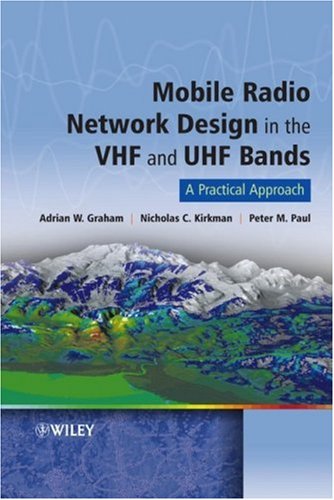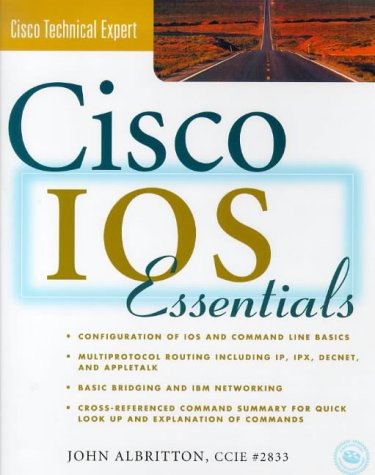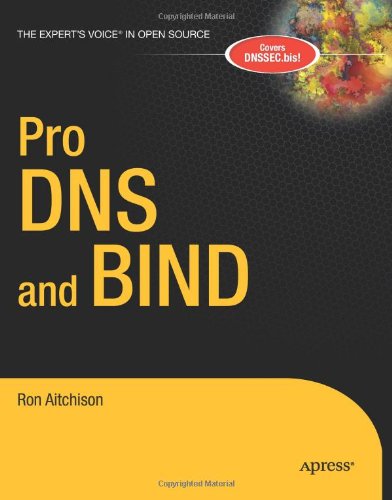Adrian Graham, Nicholas C. Kirkman, Peter M. Paul9780470029800, 0470029803
In this book you will find out how some of the most highly-regarded radio network designers around go about designing radio networks that actually meet the needs of the network subscriber and of the network operator. It describes a well-proven framework that meets the essential need of ensuring that each step of the design project is carried out against known, unique and unambiguous requirements, and that these requirements have been extensively validated against the original requirements. Reveals the secrets behind coverage design, capacity planning, interference analysis and reduction, frequency assignment and verifying that the delivered network actually performs as promised Introduces the concept of documentary deliverables as part of the project and underlines the need for method statements, user requirement, functional, test and design specifications Provides readers with a far greater understanding of the methods and processes necessary to bring about the successful completion of a radio network project Highlights vital aspects of radio network projects that are not always apparent to every engineer, but which may have a vital impact on the success of the project
The powerful approach used in this book will help to ensure the successful completion of every project and will be the basis for ensuring contractual compliance at every stage. It is an indispensable resource for all radio network design consultants and engineers, network operator technical managers, radio regulation engineers and military radio network planners.
Table of contents :
Mobile Radio Network Design in the VHF and UHF Bands……Page 3
Contents……Page 7
Foreword……Page 17
Preface……Page 19
Glossary……Page 21
PART ONE……Page 25
1.1 Mobile Radio Network Design in the Modern World……Page 27
1.2 Network Stakeholders……Page 30
1.3 Spectrum Coexistence……Page 31
1.4 The Network Design Activity……Page 32
1.5 Project Resources……Page 33
1.8 A Practical Approach, Not the Practical Approach……Page 35
2.1 Introduction……Page 37
2.2.1 The International Telecommunications Union……Page 38
2.3.1 CEPT……Page 41
2.3.7 National Bodies……Page 42
2.4.2 ETSI……Page 43
2.4.6 NTIS……Page 44
2.4.7 NTIA and ITS……Page 45
3.1 Introduction……Page 47
3.3 Types of Mobile Network……Page 48
3.4 Direct Mode……Page 49
3.5 Single Site……Page 50
3.6 Simulcast……Page 52
3.7 Trunked Radio Systems……Page 53
3.8 Cellular Systems……Page 56
3.10 Other Approaches……Page 57
3.11 Fixed and Mobile Convergence……Page 59
4.1 Introduction……Page 61
4.2 The Electromagnetic Spectrum……Page 62
4.3 Propagation Mechanisms at VHF and UHF……Page 63
4.3.2 Reflection……Page 64
4.3.3 Scattering……Page 66
4.3.4 Refraction……Page 68
4.3.5 Diffraction……Page 71
4.3.6 Absorption……Page 72
4.5.1 General Properties of Point-to-Area Models……Page 73
4.5.2 ITU-R P.370 and ITU-R P.1546……Page 75
4.5.3 Okumura-Hata, COST 231 Hata and Other Point-to-Area Models……Page 77
4.5.4 IF-77 and ITU-R P.528 Models……Page 79
4.5.5 Other Point-to-Area Models……Page 81
4.6.1 General Properties of Point-to-Point Models……Page 82
4.6.2 Bullington Method……Page 85
4.6.4 Edwards and Durkin Method……Page 86
4.7 Hybrid Models……Page 87
4.8 Radio Clutter in Propagation Models……Page 89
4.9 Tuning Propagation Models……Page 91
4.10.4 Radio Environment……Page 92
4.10.7 Available Data……Page 93
4.12 Propagation Model Summary……Page 94
References and Further Reading……Page 95
5.1 Introduction……Page 97
5.1.1 Statistics Relevant for Fading……Page 98
5.1.2 Lognormal Distribution……Page 99
5.1.3 Rayleigh Distribution……Page 100
5.1.4 Ricean Distribution……Page 101
5.1.5 Other Statistical Distributions……Page 102
5.2.1 Slow Fading (Shadowing) Mechanisms……Page 103
5.2.2 Slow Fading and Propagation Model……Page 104
5.3.1 Fast Fading Mechanisms……Page 106
5.4 Receiver Antenna Environment – Body Loss and Other Factors……Page 109
5.5.1 Generic Link Diagram……Page 110
5.5.4 Tuning Units, Amplifiers and Combiners……Page 112
5.5.5 Base Station Antennas……Page 113
5.5.7 Receiver Sensitivity……Page 115
5.6.1 Introduction……Page 117
5.6.2 Link Loss Calculation to Determine Level at Receiver……Page 118
5.6.3 Link Budget to Determine Maximum Allowable Loss……Page 119
5.6.4 Link Budget to Determine MMOFS……Page 120
5.7 Expressing the Link Budget in a Planning Tool……Page 122
5.8 Balanced and Unbalanced Links……Page 123
5.9 Equipment Data Sheets and Reality……Page 124
References and Further Reading……Page 125
PART TWO……Page 127
6.1 Introduction……Page 129
6.2 Network Design Professionals……Page 132
6.2.2 Senior Network Design Engineer……Page 133
6.2.3 Network Designers……Page 134
6.2.4 Network Design Capability Strategies……Page 135
6.3.1 The Concept of Stakeholders……Page 137
6.3.2 Stakeholders in Typical Projects……Page 138
6.4 A ‘Business-Centric’ Approach to Design……Page 141
6.5 Design Elements……Page 144
6.6 Project Phases and Project Life Cycle……Page 146
6.6.1 The Classic Life Cycle……Page 147
6.6.2 The Prototyping Life Cycle……Page 149
6.6.3 The Spiral Life Cycle……Page 150
6.6.4 Combining Project Life Cycles……Page 151
6.7.1 Our Approach to Projects……Page 153
6.7.2 Specification and Documentation within the Project……Page 154
6.7.3 The Business Case……Page 156
6.7.5 The Contract……Page 157
6.7.7 User Requirements Specification……Page 158
6.7.8 Functional Specification……Page 160
6.7.10 Test Specification……Page 161
6.8 Design Deliverables……Page 162
References and Further Reading……Page 163
7.1 Introduction……Page 165
7.2.1 History of Planning Tools……Page 166
7.2.3 Future Trends in Planning Tools……Page 167
7.3 Benefits of Using Design Tools……Page 169
7.4 Radio Network Design Tool Fundamentals……Page 171
7.5.1 Import and Handling of Available Environmental Data……Page 173
7.5.3 Data Views……Page 175
7.5.4 Mensuration……Page 179
7.5.6 User-defined Data Manipulation……Page 180
7.6 Propagation Modelling……Page 181
7.7.1 Path-Based Predictions……Page 183
7.7.2 Coverage-Based Predictions……Page 187
7.7.3 Traffic Predictions……Page 192
7.7.4 Interference Predictions……Page 194
7.7.5 Frequency Assignment……Page 199
7.7.6 Modelling Radios……Page 200
7.7.7 Ancillary Features……Page 201
7.7.8 Advanced Features……Page 202
7.7.10 Selecting the Right Tool for the Job……Page 207
7.8.1 Introduction to Environmental Data……Page 208
7.8.2 Digital Terrain Maps and Digital Elevation Models……Page 211
7.8.3 Clutter Data……Page 215
7.8.4 Building Data……Page 216
7.8.5 Image Data……Page 217
8.1 Introduction……Page 219
8.2 Project Requirements Statement……Page 220
8.2.2 The Spectrum Environment……Page 221
8.2.4 The Required Services……Page 223
8.2.6 The CIS Project……Page 224
8.4 The RNDS Project Team and the Stakeholders……Page 225
8.4.1 Countyshire Investigation Services (CIS)……Page 227
8.4.3 Spectrum Services Ltd (SSL)……Page 229
8.4.6 Interacting with Stakeholders……Page 231
8.5 Project Activities……Page 232
8.6.1 Starting the Method Statement……Page 233
8.6.2 Project Resources……Page 235
8.7 Elucidating Project Requirements……Page 237
8.8 Detailed Design Document……Page 240
8.9 Test Specification……Page 242
8.11 Quality Plan……Page 243
8.13 Producing a Baseline……Page 244
8.14 Outline Planning and Dimensioning……Page 246
8.16 Continuing with the Project……Page 247
9.1 Introduction……Page 249
9.2.2 Practical Definition of Service Requirements……Page 250
9.2.3 Definition of Geographic Service Areas……Page 252
9.3 Initial Design Approaches……Page 253
9.3.1 Grid Style Approach……Page 254
9.3.2 Selective Design Approach……Page 255
9.3.3 High Point Approach……Page 256
9.3.4 Existing Site Approach……Page 257
9.4.1 Setting Up Coverage Predictions……Page 258
9.4.2 Performing Coverage Predictions……Page 261
9.4.3 Configuring Prediction Results……Page 262
9.4.4 Interpreting Coverage Predictions……Page 265
9.5.1 Introduction……Page 267
9.5.2 Nominal Base Station Parameters……Page 268
9.5.3 Mobile Parameters……Page 269
9.6 Base Station Design and Optimisation……Page 272
9.7.2 Greenfield Projects……Page 274
9.8 Legacy Projects……Page 276
9.10 Coverage Design Deliverables……Page 277
10.1 Introduction……Page 279
10.2.1 Determining Subscriber Types……Page 280
10.2.2 Public Safety Example……Page 284
10.3 Representing Traffic Demand Metrics……Page 286
10.4.1 Introduction……Page 287
10.4.2 Erlang B……Page 288
10.4.4 Erlang C……Page 290
10.5 Determining Traffic Demand on a Site-by-Site Basis……Page 293
10.6 Capacity Planning for Traffic……Page 294
10.7 Modelling Mixed Services……Page 296
10.8 Designing for Traffic……Page 297
10.9 Traffic Analysis Deliverables……Page 299
11.2.1 Introduction……Page 301
11.2.2 Pilot System……Page 302
11.2.3 Regional Rollout……Page 303
11.2.4 Sparse Network……Page 305
11.3 Re-Broadcast/Relay Links……Page 307
11.4 Future Proofing……Page 308
12.2 Background to Backhaul……Page 309
12.3 Specifying Link Performance……Page 311
12.4.1 Line of Sight Condition……Page 312
12.4.2 Availability Calculations for Fixed Links……Page 313
12.4.3 Diversity Techniques to Improve Link Performance……Page 324
12.5 Calculating Microwave Reliability……Page 327
12.6.2 Equipment Thermal Noise……Page 329
12.6.3 Interference……Page 331
References and Further Reading……Page 335
13.2 Thermal Noise Floor, Receiver Noise Floor and Receiver Sensitivity……Page 337
13.3 Noise in the VHF and UHF Bands……Page 339
13.4 Interfering Radio Noise at the Receiving Antenna……Page 341
13.5.1 Introduction……Page 344
13.5.2 Co-Channel Interference……Page 345
13.5.3 Adjacent and Other Channel Offset Interference……Page 346
13.5.4 Multiple Interferers……Page 348
13.6 Interference Propagation Models……Page 351
13.7 Interference Mitigation Approaches……Page 352
References and Further Reading……Page 353
14.1 Introduction to Frequency Assignment……Page 355
14.2 Frequency Assignment in Context……Page 358
14.3 Network Frequency Plans……Page 360
14.4 Overall Assignment Process……Page 361
14.5.1 Prioritisation of Requests……Page 362
14.5.2 Manually Seeding Assignments……Page 363
14.5.3 Illustration of an Assignment Process……Page 364
14.6.1 Introduction……Page 365
14.6.3 Frequency Separation……Page 368
14.6.4 Inter-Modulation Products……Page 369
14.7 Assignment Methods for Mobile Units……Page 374
References and Further Reading……Page 377
15.1 Validation and Verification……Page 379
15.2 Introduction to Surveys……Page 380
15.3.1 Capturing Statistically Valid Data……Page 384
15.3.2 The Mobile Signal……Page 385
15.3.3 Sampling Rate……Page 386
15.3.4 Sample Gap Distance……Page 388
15.3.5 Selecting a Measurement Receiver……Page 390
15.3.6 Surveying Fundamentals Summary……Page 391
15.4 Digital Surveying……Page 392
15.6 Planning a Survey Campaign……Page 396
15.6.3 Emulating Hand-Portable Performance from a Vehicle Radio……Page 397
15.7 Network Analysis and Network Acceptance……Page 398
15.8 A Case Study……Page 400
15.9 Verification Deliverables……Page 401
16.2.2 Technology Analysis……Page 403
16.3 Project Phases and Documentation (Chapter 6)……Page 404
16.4 Setting Up the Project (Chapter 8)……Page 405
16.5.1 Environmental Data……Page 406
16.6 The URS (Chapters 6 and 8)……Page 407
16.9 Traffic Design (Chapter 10)……Page 408
16.12 Verification (Chapter 15)……Page 411
16.13.2 Design Deliverables……Page 413
16.14 Final Thoughts……Page 414
Index……Page 417







Reviews
There are no reviews yet.